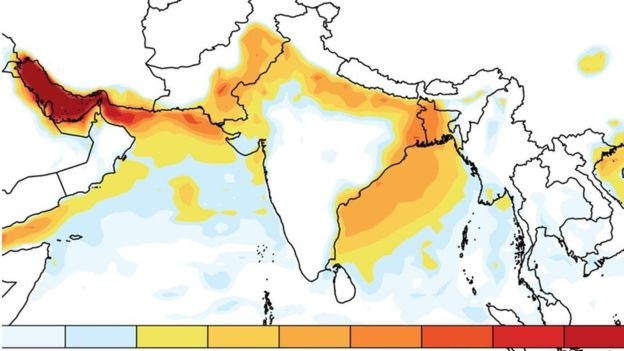(VOVWORLD) - Analysis released by American scientists last Wednesday finds that humid heat waves in Southern Asia, home to one fifth of the world’s population, will reach a level of humid heat that poses “extreme danger” by the end of the century. Published in the journal Science Advances, the analysis is based on a combination of temperature, humidity, and the ability of the human body to cool itself in response to environmental changes.
|
 Poor farmers are most at risk from future humid heatwaves. Poor farmers are most at risk from future humid heatwaves.
(Photo: NurPhoto/via Getty Images)
|
Southern Asia is already the wettest area in Asia and one of the wettest in the world, receiving an average of at least 1000mm of rainfall a year.
Climate scientist Dewi Kirono at Australia's Commonwealth Scientific and Industrial Research Organisation (CSIRO) said climate change will cause more severe, torrential rainfall.
According to the report, if climate changes at the current rate, temperatures across Southern Asia will approach the limits of human survivability and could even exceed that threshold in some places by the end of this century.
While the normal temperature inside the human body is 37C, the skin is normally no more than 35C. Research says about 30% of the inhabitants of Southern Asia will be exposed to potentially fatal humid heat waves which will not allow them to maintain that body temperature. In the next few decades, deadly heat waves will begin to take their toll on India, Pakistan, and Bangladesh in the valleys of the Indus and the Ganges Rivers.
If the worst scenario occurs, 1.25 billion people in India and 350 million more in Pakistan and Bangladesh could literally be cooked to death by the air they breathe.
In 2015, India and Pakistan experienced the fifth most dangerous heat wave in history, which caused at least 3,500 deaths.
 This map shows the combined temperature and humidity figures recorded in this region since 1979. (Photo: ELTHAHIR/PAL/IM) This map shows the combined temperature and humidity figures recorded in this region since 1979. (Photo: ELTHAHIR/PAL/IM) |
According to scientists, around 30% of the region’s population is projected to be living in a climate with a median humid temperature of 31C or more. At present, the number of people facing this level of threat is essentially zero.
Professor Elfatih Eltahir of the Massachusetts Institute of Technology (MIT) emphasizes the importance of climate change mitigation in helping Southern Asia avoid the worst.
Global warming in the world’s wettest regions is already negatively affecting human health and seriously hampering economic growth.
A report by the Asian Development Bank said that by the end of this century climate change could slash 9% off the South Asian economy every year if the world continues on its current fossil-fuel intensive path.